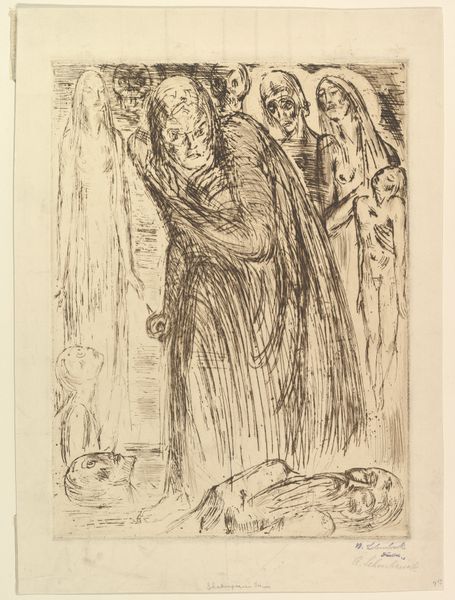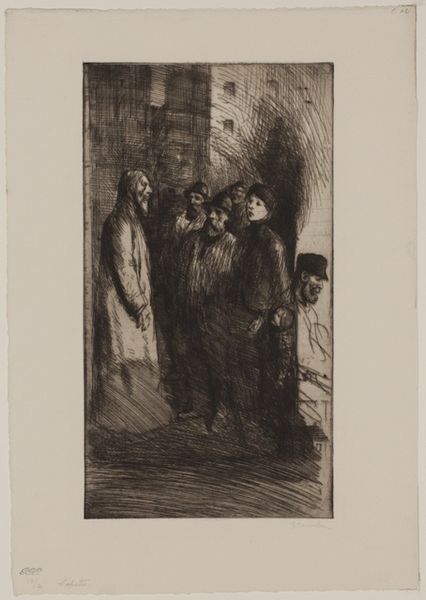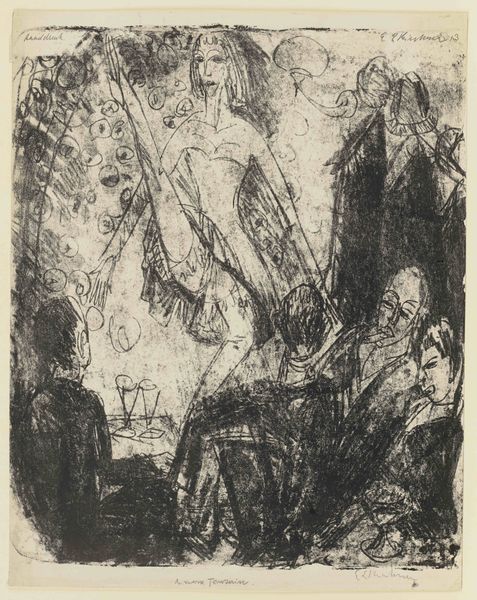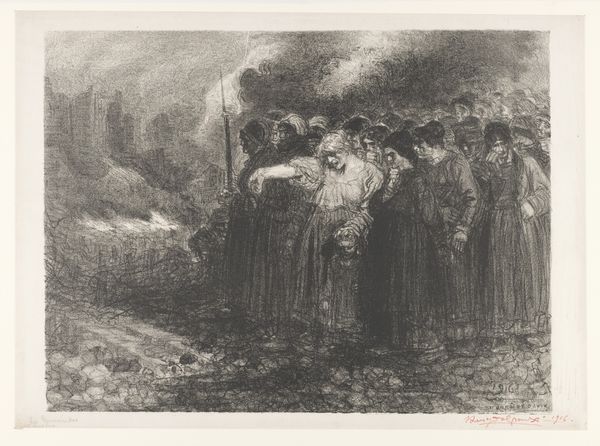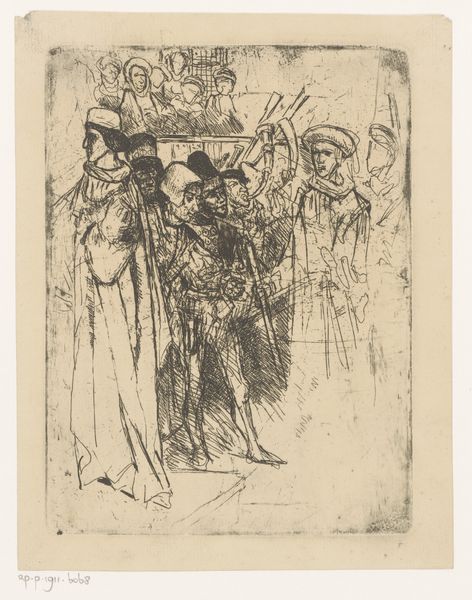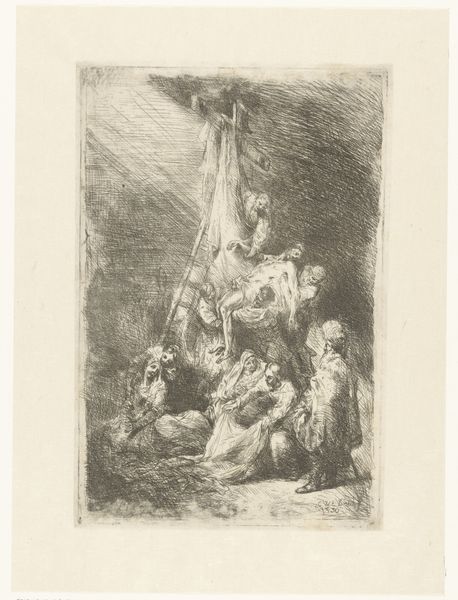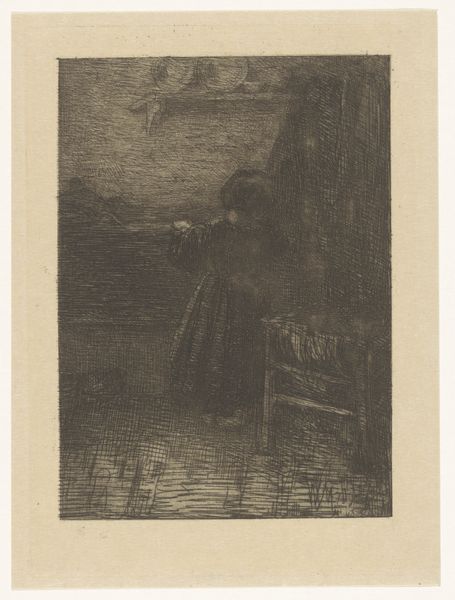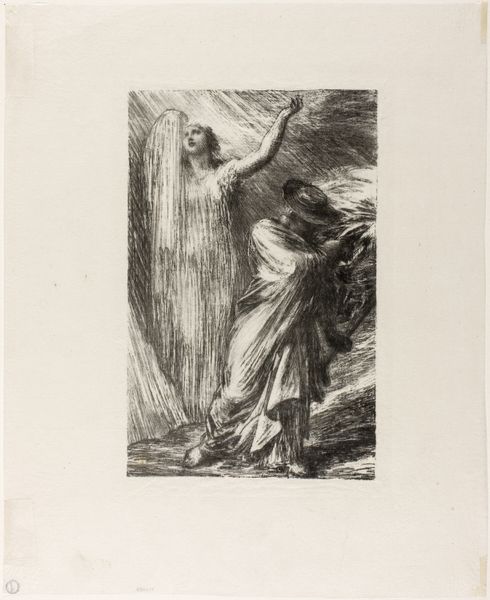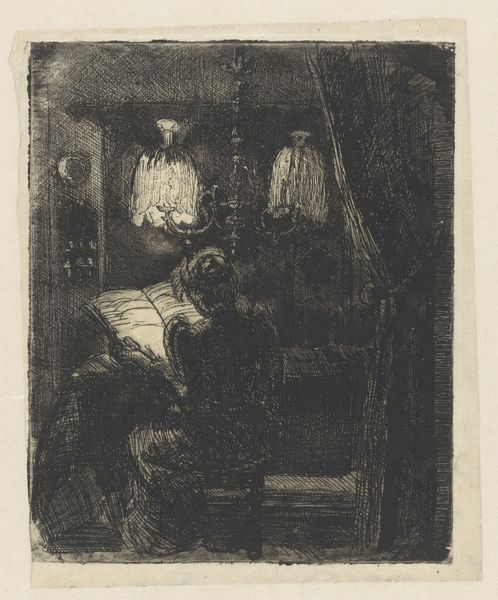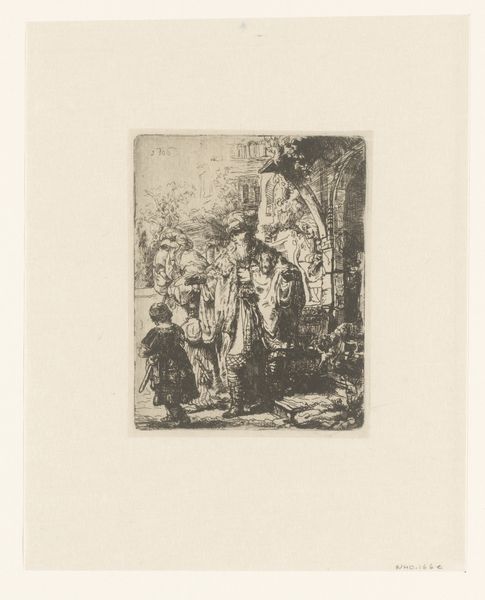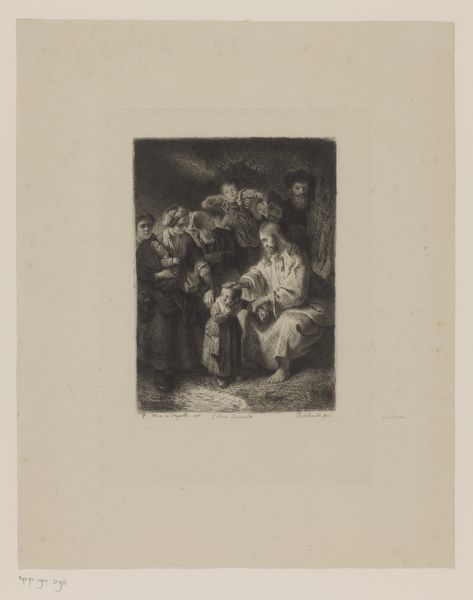
print, etching
narrative-art
impressionism
etching
old engraving style
personal sketchbook
cityscape
genre-painting
Dimensions: height 148 mm, width 104 mm
Copyright: Rijks Museum: Open Domain
Curator: This is Antoon Derkinderen’s etching from 1886, titled "Tussen de kramen", or "Between the Stalls". Editor: My first impression is of a hidden world, shadowed by a kind of canopy. The image seems densely packed, like a collection of hushed secrets being bartered. What mood does it strike for you? Curator: I find the figures recall medieval woodcuts in their construction. Notice how each is cloaked and individualized—revealing perhaps the singularity within a communal, industrious setting? Editor: The etching is quite dark overall. Given the probable speed of its making compared to painting, for example, do you think the shadows are a reflection of time constraints or is the artist deliberately imbuing it with meaning through stark contrasts? Curator: A bit of both, likely. Etching, while efficient, is also indirect. The acid etching of the plate would’ve deepened those shadow areas, heightening the narrative tension inherent to marketplace scenes since the medieval period: commerce versus morality. The canvas tarps overhead also introduce visual echoes of religious tabernacles and ceremonial canopies. Editor: Looking at the canopies you mentioned, I wonder about their raw, textile reality in this context: Were they new or patched-up? Mass produced or locally sourced? And what about the clothing: What labor produced those clothes? These are vital material stories not apparent, but deeply informing this imagery of exchange. Curator: Material origins influencing visual language; very interesting. I'm now drawn to how Derkinderen might have thought of genre painting as inherently pedagogical; conveying moral lessons of the market and labor relations within it through visual language? Editor: Fascinating, because if the labor narrative seems unclear to the contemporary viewer now, perhaps it still hints at the socio-economic imbalances endemic even to contemporary trade. It is interesting how it all translates into the etching medium. Curator: Yes, this work truly exposes both cultural memory and artistic innovation. Editor: Indeed; each choice, material and artistic, leaves resonant imprints.
Comments
No comments
Be the first to comment and join the conversation on the ultimate creative platform.
